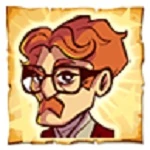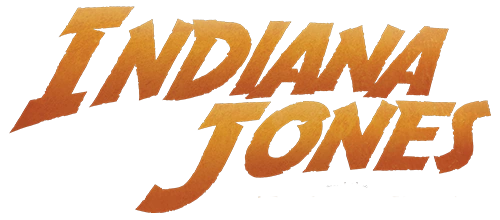- "Competitor. He was good, he was very good."
- ―Indiana Jones[src]
Doctor Forrestal was an archaeologist who taught history and archaeology at Princeton University. A professional rival of Indiana Jones, Forrestal's skills were held in high regard by Jones but the man was, on occasion, clumsy in his work.
Forrestal went missing around 1935 while searching for the Chachapoyan Fertility Idol in Peru. There, Jones would eventually discover his body inside the Temple of the Chachapoyan Warriors about a year later, killed by a spike trap.
Biography[]
Rivalry with Indiana Jones[]
Forrestal and Indiana Jones had a professional rivalry in archaeology from the early days of Jones entering the field and each man held the abilities of the other in high regard.[3] Forrestal also had at least some association with the French mercenary archaeologist René Emile Belloq, another of Jones' competitors.[4] As part of his work, Forrestal acquired extensive experience in Central and South America, participating in digs at Aztec and Mayan sites. Jones speculated that Forrestal must have had a virtual intelligence network throughout the globe, with contacts from Lima to Mexico City.[3]
At some point of his career, Forrestal explored the Cooley, Ireland digs and determined that the area was barren. However, Jones eventually visited the site and unearthed some pre-Viking relics about which he later wrote, a find deemed "brilliant" by Professor Karen Mays.[5]
In 1930, Forrestal and Jones were both in Sweden searching for a pagan temple. Indiana Jones initially believed Forrestal to be one step ahead of him but Jones and Doctor Theresa Lawrence reached the site first due to better research.[6]
Four years later, Forrestal met with a man in Shanghai who wanted the archaeologist to assist his organization, the Brotherhood of the Eclipse, in finding the Calendar of the Sun, an artifact in two parts believed to have the power to control eclipses.[7]

Forrestal in 1934.
Drawn to the seemingly centuries-old organization, Forrestal agreed and the group set up a camp in South America near an area littered with the bodies of adventurers who had succumbed to the traps around the mysterious Moon Door which led to the Moon Temple and the Calendar's Lunar Component.[7]
The Brotherhood recovered the piece from its altar but betrayed Forrestal and left him to die in a trap when they flew out to Egypt. It was then that Indiana Jones arrived having fought off Brotherhood members to claim the Solar Component for himself. Jones, and a member of the Adventure Society who had been helping him look for the Lunar Component, rescued Forrestal and the grateful competitor revealed details of the Brotherhood to the pair.[7]
Forrestal also discovered a river flowing out from beneath El Dorado and informed the Adventure Society, which was excavating the area in and around El Dorado, as a "gesture of goodwill".[7]
Death[]
In 1935, Forrestal organized an expedition to Peru while searching for the Temple of the Chachapoyan Warriors to uncover their solid gold fertility idol.[2] Utilizing the research of the 19th century American explorer McHenry from the University of Chicago's library, Forrestal carried out some rewarding excavations of Chachapoyan sites in his hunt for the temple. He then took a flight to Peru's jungles through a pilot whom Jock Lindsey knew. Unknown to Forrestal, Belloq became aware of his intentions and hired the thieves Barranca and Satipo to steal a map to the Temple of the Warriors from one of Forrestal's campsites. The two thieves kept the map, which was incomplete, for themselves and told Belloq that it was useless.[3]
Despite this setback, Forrestal still ended up finding the Temple of the Chachapoyan Warriors anyway. Upon entering into the structure, however, Forrestal never came back out.[2] As the Hovitos later informed Belloq, Forrestal had rushed into the temple to find the idol without checking for the light-sensitive booby traps that ultimately cost him his life.[8]
Legacy[]
One year later, Indiana Jones told to his friend Marcus Brody that he thought that the Key to the Tomb of the Gods was "new history" unlike anyone Forrestal or Abner Ravenwood had ever seen.[9] This same year, a collection of golden figurines recovered from Forrestal's Chachapoyan dig sites began showing up on the antiquities market.[2] When Brody became aware of it, he alerted Jones, who had been keeping apprised of some of Forrestal's efforts to locate the temple. Princeton University originally kept Forrestal's office locked, but once they realized he wouldn't be returning months later, they opted to sift all his "junk" and deposited all his papers at the library's archives.[3]
With Forrestal's fate unknown to the outside world, the National Museum contracted Indiana Jones to follow the archaeologist's notes and research so that he could recover the idol,[1] which was already being sought by several in the wake of Forrestal's disappearance, making visits to other possible places for the idol like the Snake Temple not recommendable.[10] In preparation, Jones contacted Priceton and got access to Forrestal's notes.[3] It was in the Temple of the Chachapoyan Warriors that Jones discovered Forrestal's body, speared by a row of sharp spikes triggered by a source of light. It was the first of several traps protecting the relic.[1] Feeling that nobody deserved to be killed in that way and even less in a godforsaken place like that jungle, Jones experienced a moment of sadness for his late rival.[11]
Years later, Jones returned to the temple in order to further explore the site. When he entered into the temple's runner, he found Forrestal's carcass reduced to bones for which Jones remembered and lamented the fate of his competitor once more before continuing with his research and uncovering a second idol.[12]
Personality and traits[]
An archaeologist like Indiana Jones and René Emile Belloq, Forrestal used to scoure the globe for relics and structures of archaeological interest. As Jones noted after Forrestal's death, Forrestal was a very good competitor.[1] He was honorable and grateful, such as when Jones and one of his allies rescued Forrestal from a trap after being betrayed by the Brotherhood of the Eclipse, Forrestal thanked and rewarded the pair by revealing details of the Brotherhood to them.[7]
Forrestal was very experienced, considering his work in Central and South America, becoming fluent in more Indian dialects that Jones knew to exist. Much like Jones, he had his own specialties with different patrons.[3] From Indy's point of view, Forrestal had seen and studied enough of the world's history.[9] Personally, Jones considered that Forrestal seemed to mark better finds, bring more intriguing artifacts and find leads to archaeological sites he had never heard about. When it became clear that Forrestal would not be coming back from his expedition, Jones was surprised to learn about his disappearance because of Forrestal's ability.[3]
In spite of his academic performance, Forrestal was a bit clumsy, overlooking important pages and pencilled notes from McHenry's research.[3] Indy described him as good, but that he could be sloppy in a rush.[6] Unfortunately, when Forrestal went to the Temple of the Chachapoyan Warriors in his search for the Chachapoyan Fertility Idol, he rushed into the temple without checking if there were any traps.[8] Such action cost Forrestal his life, leaving his corpse skewered on a spike trap to serve as a warning for any further adventurers.[11]
Behind the scenes[]
Forrestal's was first featured, as a corpse, in Raiders of the Lost Ark.[1] Indiana Jones Adventures: Volume 1 erroneously spells it as "Forrestall" with a double L.[6] Despite the man being mentioned a number of times in Indiana Jones stories, and Jones' respect for his abilities, it was not until 2011's Indiana Jones Adventure World, three decades after the release of Raiders, that Forrestal was visually depicted prior to his death.[7]
While developing the film in a story conference in January 1978, Steven Spielberg was the one who suggested having the Temple of the Chachapoyan Warriors's spike traps reveal skeletal remains skewered on them, likening it to the experience of some rides at Disneyland. In Lawrence Kasdan's first draft of the script, Indy was originally going to take down Forrestal's body from the spike trap and lay him gently to the floor. This idea, however, didn't make it to the final version of the film where Indy simply leaves Forrestal's body where he finds it.[13] This noble action, however, was included in Marvel Comics' comic book adaptation.[14]
On the first seven days for filming the Temple of the Chachapoyan Warriors scene, animal handler Mike Culling came with live maggots for the Forrestal prop.[13]
Forrestal, though mentioned, is absent from Disney's Indiana Jones Epic Stunt Spectacular!. In the show, there is no trace of a human presence at the Temple of the Chachapoyan Warriors when Indy appears alone to retrieve the Chachapoyan Fertility Idol.[15]
He is also omitted from both LEGO Indiana Jones: The Original Adventures and its sequel (as in both games the spike trap isn't featured and Satipo never dies), but in the LEGO Indiana Jones set "Temple Escape", there is a generic skeleton minifigure attached to the spike trap as Forrestal was in the film itself.[16] There were plans by Kenner in the 1980s for a Temple of the Chachapoyan Warriors playset which would have included Forrestal's body. The set, however, went ultimately unproduced when the whole Indiana Jones toyline was abruptly cancelled, although some concept art was made.[17]
Appearances[]
- Indiana Jones Adventures: Volume 1 (Mentioned only) (As "Forrestall")
- Indiana Jones Adventure World
- Indiana Jones and the Tomb of the Gods (Mentioned only)
- Raiders of the Lost Ark (First appearance) (Remains)
- Raiders of the Lost Ark novel (Remains)
- Raiders of the Lost Ark comic (Remains)
- Indiana Jones and the Raiders of the Lost Ark junior novel (Remains)
- Indiana Jones Epic Stunt Spectacular! (Mentioned only)
 The Further Adventures of Indiana Jones – "Gateway to Infinity!" (Mentioned only)
The Further Adventures of Indiana Jones – "Gateway to Infinity!" (Mentioned only)- Indiana Jones and the Infernal Machine (Remains)
- Indiana Jones: Traps and Snares
Sources[]
- The World of Indiana Jones (Pictured only)
- Raiders of the Lost Ark Sourcebook
- Indiana Jones and the Golden Vampires (Cover)
Satipo's Marshall College entry on IndianaJones.com (backup link on Archive.org) (As "Forestal")
- Indiana Jones: The Ultimate Guide
- The Lost Journal of Indiana Jones
- The Greatest Adventures of Indiana Jones
 Indiana Jones Heritage trading cards (Card: Danger Everywhere!)
Indiana Jones Heritage trading cards (Card: Danger Everywhere!)- Grail Diary (prop replica)
- Indiana Jones Cryptic
Notes and references[]
- ↑ 1.0 1.1 1.2 1.3 1.4 1.5 1.6 1.7 Raiders of the Lost Ark
- ↑ 2.0 2.1 2.2 2.3 Indiana Jones: The Ultimate Guide
- ↑ 3.0 3.1 3.2 3.3 3.4 3.5 3.6 3.7 Raiders of the Lost Ark Sourcebook
- ↑ The Lost Journal of Indiana Jones
- ↑
 The Further Adventures of Indiana Jones – "Gateway to Infinity!"
The Further Adventures of Indiana Jones – "Gateway to Infinity!"
- ↑ 6.0 6.1 6.2 Indiana Jones Adventures: Volume 1
- ↑ 7.0 7.1 7.2 7.3 7.4 7.5 Indiana Jones Adventure World
- ↑ 8.0 8.1 The Greatest Adventures of Indiana Jones
- ↑ 9.0 9.1 Indiana Jones and the Tomb of the Gods
- ↑ Indiana Jones Cryptic
- ↑ 11.0 11.1 Raiders of the Lost Ark novel
- ↑ Indiana Jones and the Infernal Machine
- ↑ 13.0 13.1 The Complete Making of Indiana Jones
- ↑ Raiders of the Lost Ark comic
- ↑ Indiana Jones Epic Stunt Spectacular!
- ↑ LEGO Indiana Jones
- ↑ SEE CONCEPT ART FOR CANCELED INDIANA JONES TOYS FROM 1980'S KENNER at The Week In Nerd
